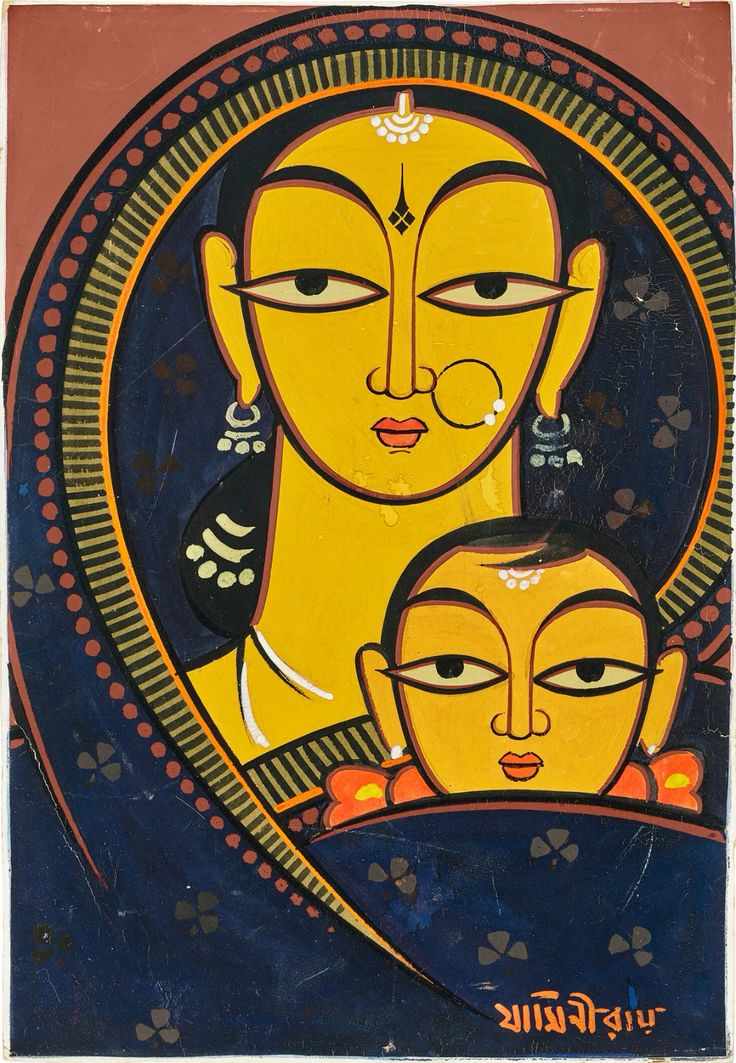
India has a rich and diverse flavour of Tribal & Folk Arts. Each region or state has exceptional variants and is home to various native communities and their varied art forms.
In the primal world, the practices of these tribal communities and their lifestyles were often depicted through the arts. It was passed on from one generation to the next. Back in those days, they used natural materials such as rice paste, oil lamp soot, and plant and vegetable-derived colours for their paintings.
Now, a little bit about the Warli Art. It dates back to 3000 BC, sometime in the Neolithic period. The word “Warli / Varli” originates from “Warla” which means a piece of land and it’s also the name of a tribe from Maharashtra spread in villages named Palghar, Dahanu, Vada, Talasari, Mokhada and several other parts of the district as well. Their art is largely composed of lines, triangles, circles, and dots in white colour which represent nature:
Circle as the sun and moon
Triangle as the mountains and conical trees
The square represents a sacred enclosure or a piece of land
Concentric circular design as the circle of life
Warli art was unknown till the 1970s. It had been seen only on the walls of houses and as a ritualistic art done during marriage functions in the village/ Tribe. The paintings were done by the married women called “Suvasins” and the young girls of the community.
The Warli Art is usually seen as white motifs painted on a red base. They used rice paste for white motifs and bamboo reeds to draw on the red base, which is the red colour soil called Geru Mitti available in their region or mud mixed with cow dung. Warli is very similar to the Zulu paintings of African Tribe also it has similarities to Saura Art of Odisha.
There are 2 types of Warli paintings – Ritualistic and Non-Ritualistic.
Ritualistic paintings depict worshipping nature held sacred and are of great importance to communities like Tarpa, Dev Chowk, Lagna Chowk, etc. On the other hand, non-ritualistic paintings are those which depict scenes like hunting, farming, and celebrating small festivals and are more for decorative purposes.
Some paintings have borders and some do not, meaning bordered paintings represent the ritual practices they made and those with no borders are of no boundaries for their livelihood and day-to-day activities.
You would have observed that the human figure is of two inverted triangles joining at their pointed ends which delineate the equilibrium of nature and humans, both have to balance and should go hand in hand for the survival of this world. They never disrupt nature or go against it, they take what is necessary for living and minimalism was practised. Only depended on materials that grew or were found in their flora and fauna.
Warli tribe worshipped nature in different forms – the Sun and moon, the god of thunder, wind, and rain, they had no deities. They worshipped them according to the seasons. As they were farmers, when harvested rice for the first time they worshipped the god of rain and celebrated the festival of Naranadeva, similarly, they have Gav Dev (Local Gods)– Himai, Hirva Dev, Jhoting, Kansari Devi- the goddess of grain, Phalghat Devi - deity of fertility, Whag Dev - Tiger God. They celebrate the Holi festival as their New Year. Male gods are unusual among the warli tribe and are frequently related to spirits which have taken human shape, Panchasiriya - is a five-headed male god who rides a horse and exhibits celebration of life even in death.
The worship of god/celebrating festivities were conducted annually or once in five years depending on their harvest and alignment of stars.
Circle of Life -Warlis believe that life is a cycle that is eternal. Circles best represent the art of warli, for instance, Tarpa Dance. They believe life has neither an end nor a beginning. On all occasions be it birth, marriage, harvest or death they draw circles, a symbol of the Mother goddess/ earth. Death is never the end; rather it is a new beginning.
Talking about their Tarpa dance, a physical manifestation of music where men, women, and children intertwine their hands and move in a circle around the tarpa player according to his tunes, here the musician plays two different notes which directs the lead dancer to either move in clockwise or anti-clockwise way making a fluid and secure human chain. Tarpa is specially played and danced on Diwali to please Ann Dev - God of Food.
Tarpa Dance starts at sunset and will be danced till the sunrise of the next day.
Tarpa is a form of trumpet, a wind instrument made from a dried ash gourd, bamboo leaves and beeswax. It's a layered musical magic in a single instrument. The music played during tarpa dance is organic and is not pre-tuned, it is up to the artisan to channel his or her energies whatever their souls decide. It is also said that the music has healing powers. They also treat illness using all natural things - Music, vegetation, herbs and other first produce.
Significance of Women in Warli Tribe - The women were artists, musicians, and hunters, uncommonly depicting prominent roles that women have traditionally occupied in Indian society. Dhavleri refers to widows who are marriage bhagats (priests), the Sunvasins, married women who perform important functions for the bride at weddings, the Soyins, who are midwives and traditional healers, and the Talanwali, who perform funeral rites. They were way ahead of today's era and had no boundaries to perform any given duty.
This art was recognised by artist and Padma Shri awardee Jivya Soma Mashe in the 1970s.
The beauty of this art is its simplicity and the bond between humans and nature.
Nowadays, the versatility of Warli art is seen in home décor, clothing, and fancy articles.









Write a comment ...